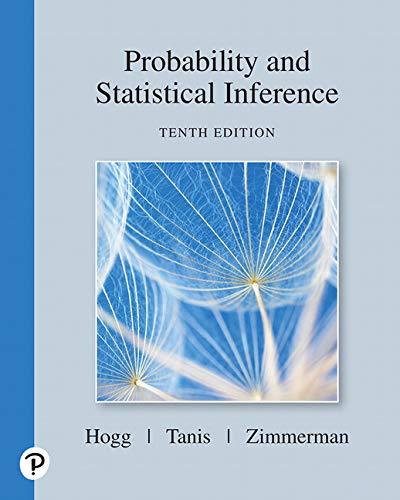
Concept explainers
Let the pmf of X be defined by
... Show that E(X) does not exist in this case.
Want to see the full answer?
Check out a sample textbook solution
Chapter 2 Solutions
Probability And Statistical Inference (10th Edition)
Additional Math Textbook Solutions
A First Course in Probability
A First Course in Probability (10th Edition)
Fundamentals of Differential Equations (9th Edition)
Fundamentals of Statistics (5th Edition)
Essentials of Statistics (6th Edition)
- If a functionfis increasing on (a,b) and decreasing on (b,c) , then what can be said about the local extremum offon (a,c) ?arrow_forwardUse the table to determine D,f(g(x))) at x = 3. |1 f(x) 1 4 3 2 f(x) 3 -5 1 4 g(x) 2 4 1 3 6 -5 1 2 3 4 ... g'(x) |1 A -15 B -5 1 D B.arrow_forwardLet f(x) = v9x + 8 and g(x) =x+9 be functions from R to R. Find the following. a) (f • g)(x) = 89 I3I b) (g • f)(x) = 17 c) (f • f)(x) = 80arrow_forward
- I understand the process of proving 1-1 and onto, however, how did you obtain the function f(x) = ((t-s)/(q-p))(x-p)+s from f:(p,q)->(s,t)?arrow_forwardLet f(x) = Vx +7 and g(x) = x +3 a) Find (2) (2) show work. b) Give the domain of the function (-) x) in interval notationarrow_forwardLet f(x)= cos(x)arrow_forward
 Algebra & Trigonometry with Analytic GeometryAlgebraISBN:9781133382119Author:SwokowskiPublisher:Cengage
Algebra & Trigonometry with Analytic GeometryAlgebraISBN:9781133382119Author:SwokowskiPublisher:Cengage Elements Of Modern AlgebraAlgebraISBN:9781285463230Author:Gilbert, Linda, JimmiePublisher:Cengage Learning,
Elements Of Modern AlgebraAlgebraISBN:9781285463230Author:Gilbert, Linda, JimmiePublisher:Cengage Learning,


